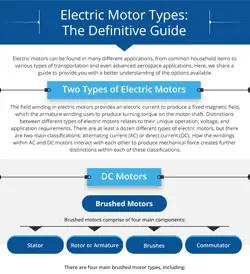Electric Motor Types: The Definitive Guide
Electric motors can be found in many different applications, from common household items to various types of transportation and even advanced aerospace applications. Here, we share a guide to provide you with a better understanding of the options available.

